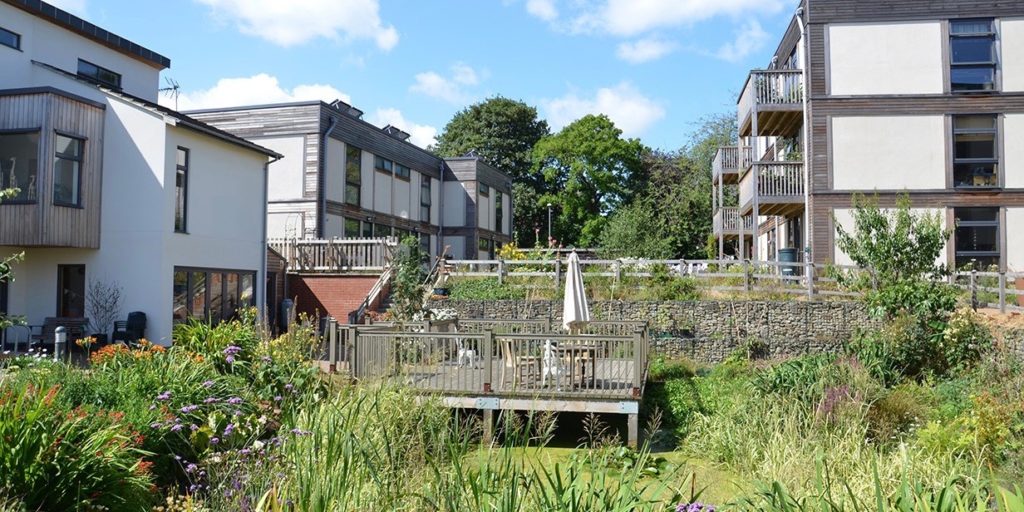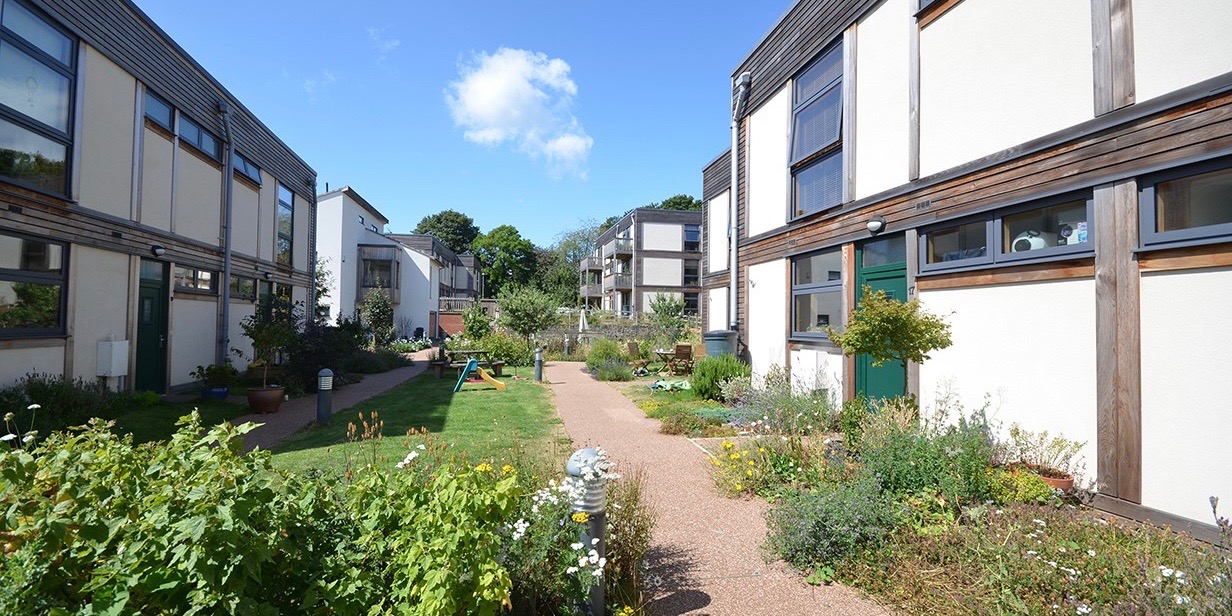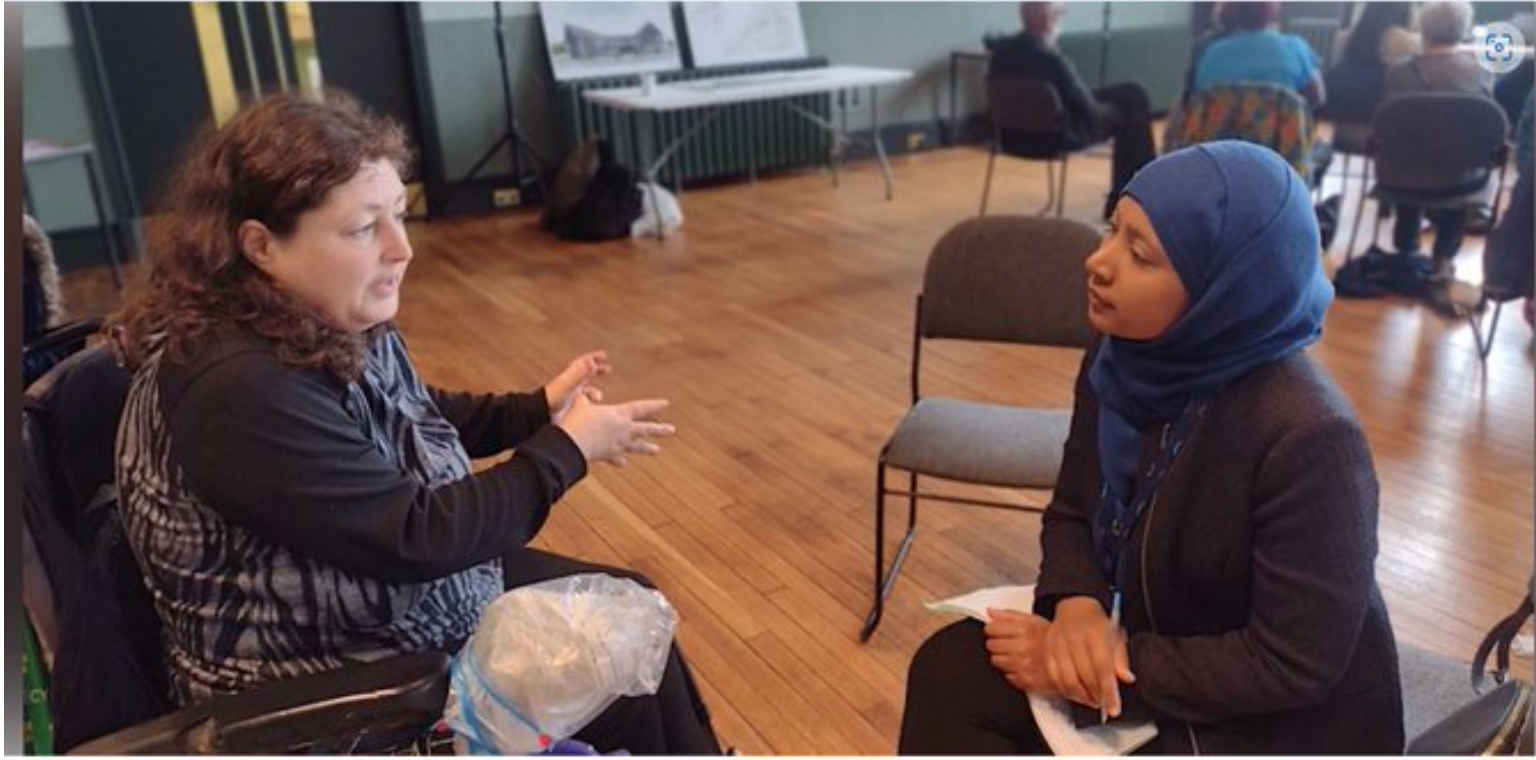By Jenny Pickerell (@JennyPickerill)
Professor of Environmental Geography, University of Sheffield, England
j.m.pickerill@sheffield.ac.uk
Eco-housing is often assumed to cost more to build than conventional housing. The main way in which eco-construction costs are reduced is through self-build, but this does not help most people. Instead there is a need to reconceive the costs of eco-building and develop more radical alternatives for building low cost eco-housing. This article explores the options and makes ten recommendations.
Unaffordable eco-housing
Of all the presumptions attached to eco-housing the most pervasive, popular and repeated is that eco-housing costs more than conventional housing, and as such it is expensive and unaffordable. This frames eco-housing as a luxury for the wealthy, or a choice for the environmentally committed willing to make sacrifices. This perceived cost of eco-housing is one of the biggest, if not the main, rationale used to explain its lack of uptake.
I have recently completed a four-year research project exploring how affordable eco-homes get built and how we could encourage more low cost eco-housing. This research involved visiting and researching 34 eco-houses and eco-communities in England, Wales, Scotland, Argentina, Thailand, Spain and USA.
There is no simple cause of (or solution to) high cost housing; it is not simply a matter of relaxing planning restrictions, increasing supply or increasing state subsidies. Even some eco-housing experiments that have sought to develop low cost approaches have encountered problems where financial costs have risen significantly or residents end up living on the financial margins of society.
There are multiple processes at work in the housing market where private construction firms seek solely to make profit at the point of sale (and therefore reject any perceived additional expenditure on ecological features), but also that too often eco-builders rely on using self or volunteer labour (sweat equity) as the main way in which to reduce building costs, ignoring many other financial issues. The current ways in which housing is ‘costed’ are limited and limiting, and the processes of why and how we build houses creates unaffordable housing.
Affordability is the ability to rent or purchase a house, and cover its energy and occupation costs, on a median income while having income left over to cover all other basic needs. There is much merit in the USA guidance that a house and its associated costs should cost less than 30 per cent of a household’s income.
The financial costs of building
The financial costs of building are a result of the expense of all the elements required to build houses (in my research the average costs for building were: land 16%, materials 40%, labour 34%, and professional fees 10% of total costs) and the way in which houses are considered a reliable form of financial investment. Land owners, architects and designers, construction firms, building material supply firms, building control inspectors, estate agents, mortgage providers and building surveyors all contribute to, and make a profit from, house building. The size and the complexity of the industry is, in part, why changing or challenging how houses are currently built is so difficult. In recent years the price of housing has increased exponentially and eventually housing becomes unaffordable for many people.
For eco-housing, understanding housing as a financial investment undermines attempts to improve the quality of housing. Eco-features are not judged to add to the investment qualities of a house. One of the main ways eco-builders make eco-housing more affordable is to self-build. If self-built the cost of housing can be reduced by a third. Self-building does not, however, actually remove the costs of labour. Labour is both time and skill. Dedicating time to building a house takes time away from other activities, such as earning an income or taking care of children. In other words, self-labour still has a cost. Time is also needed to learn how to build, or if building is learnt through doing, then it will take longer. Simply removing one element of a complex process, be that labour, tax, planning restrictions, or mortgage availability, does not necessarily facilitate more affordable housing. More radical changes are needed, which challenge some of the economic fundamentals of how housing is priced and valued.
Building in affordability
Many eco-homes have been built on small budgets[i]. Several roundhouse structures in Wales have been built for a cost of only £3,700 for materials. At the same time there are numerous examples of expensive eco-homes that remain the preserve of the wealthy. Relatively little attention has been paid, by architects, eco-housing advocates, or academics to what eco-housing actually costs.
Case studies from my research identified common components of how they had reduced their costs: these included building on cheap land (often in remote places); simple small (open plan) designs and construction which are easy to maintain and can be extended at a later date (modular approaches); careful material choice; hybrid designs (using different materials and approaches) appropriate for the climate; and building collectively, reducing labour costs. Most aimed to reduce land, material and labour costs, and avoid professional fees and compliance costs.
Low Impact Living Affordable Community (LILAC)
An example of a more robust and replicable approach to affordable eco-housing is LILAC. LILAC in Leeds, England, was completed in 2013. Now home to 20 households it is an ecological and affordable co-housing project in an urban space. LILAC has a range of houses, from four bedroom homes to studio flats. The houses are built from a novel form of prefabricated straw bale panels. These panels are made in a local off-site location where timber frame panels are filled with straw and then covered in a render. These panels are then taken on site and quickly slotted together.
LILAC developed a new home ownership model; a Mutual Home Ownership Society (MHOS) to ensure the houses remained affordable in perpetuity[ii]. Costs were linked to ability to pay (income). The total cost of the project is divided into equity shares and allocated to each dwelling. Crucially, “this equity is allocated to households and they are acquired (or paid for) through each member in that household being levied a monthly member charge equivalent to 35% of their net income”[iii]. Thus inhabitants lease (acquire) their house by purchasing equity shares on a monthly basis, and every member pays the same proportion of their income. This money is used to repay a long-term mortgage from Triodos (an ethical bank) and service costs. In addition each member paid a 10% deposit of the equity shares they could afford.
Minimum net income levels were set for different size houses in the project, in order to ensure that the 35% equity share rate would generate enough income for the MHOS to cover the mortgage repayments. Prices range from £16,000 for a one-bed flat to £52,000 for a four-bed house. There is considerable flexibility in this model, it enables people to enter the housing market at income rates far lower than would be possible in the open market, high earners can buy more shares, there are systems to leave, and if this is after three years of joining members will receive some equity benefit. Equity values will not rise significantly because they are tied to average earnings, ensuring continued affordability. This approach is only possible because it is a community project. In effect the higher earners subsidise those on lower incomes and yet at the same time they do not forfeit their investment and the approach is fair because all inhabitants pay the same percentage of their income.
Rethinking costs in eco-housing
Building affordable eco-housing is possible and does not necessarily require more money than conventional construction. There is an urgent need for eco-housing advocates to clearly articulate the economic benefits and affordability of eco-homes. Too often aspirations for ecologically benign futures ignore issues of cost, ownership and social equity. Based on my research, there are ten approaches that would enable and encourage more affordable eco-housing:
- Price houses based on construction and lifecycle costs: Calculate the total operating costs over the lifetime of the building, rather than just at the moment of ownership exchange. These costs would not only include occupancy costs such as energy and water consumption, but also the costs of maintenance, an aspect often forgotten in evaluating the costs of using natural materials.
- Include all labour costs in construction costs: When calculating labour costs there is a need to include self and volunteer labour costs, whether that is in time, time away from other projects, lost income, or the costs of training. Only by calculating the full costs of building can the financial costs of eco-housing be fully understood and compared.
- Develop communal land ownership structures: Owning land communally enables cheaper use of that land. Community Land Trusts act as stewards of land holding it in common and in perpetuity, therefore reducing its cost and making it available for affordable housing.
- Develop stakeholder ownership models: The Mutual Home Ownership Society (MHOS) and used by LILAC offers real potential to ensure eco-houses are initially affordable to a diverse range of people and that they remain affordable in perpetuity. The way in which costs are linked to ability to pay (income) and the purchase of equity shares offers a real opportunity to design affordable eco-housing.
- Build quality affordable eco-housing: Some affordable housing approaches create poor quality houses. Poor design leads to higher running costs, but because these are poorly understood and not declared at time of sale, then it often does not get taken into account by market prices. Affordable eco-housing should not require living on the margins of society or the loss of comfort.
- Create exemption for eco-housing in planning legislation: Planning regulations, and the ways in which they contribute towards high land prices are particularly limiting for eco-house developments that might require space for passive solar designs and different building orientations. In order to encourage eco-housing there is a need to create exemption from some planning restrictions.
- Create allowable solutions for natural building in building regulations: Some eco-building techniques, especially natural building, make it difficult to comply with standard building regulations. Building regulations are generic and can include costly features that might not be necessary in, especially self-built, eco-homes.
- Allocate land for self-build housing: In an attempt to create housing for local residents some authorities in England have started to allocate land for self-build housing. These allocations are explicitly for eco-housing and enable the state to support self-provision of housing.
- Use different materials and methods: It is important for eco-housing advocates to be explicit about why some eco-construction approaches (particularly the more technological) can be more expensive than conventional methods. This enables builders and consumers to better understand the costs and benefits, and the diversity of approaches, of eco-housing. Some eco-design changes, like orientation for passive solar gain do not cost a lot. If reclaimed materials or prefabricated systems are also used, costs can be significantly reduced.
- Build smaller houses with shared communal space: The quality of an eco-house is more important than its size. If communal or public space is available then it is advantageous to build small individual houses, reducing the costs of construction and occupation. Co-housing approaches are a good example of this.
[i]Burnham, R (1998) Housing Ourselves: Creating Affordable Sustainable Shelter. McGraw-Hill, New York.
[ii]Rogers, D (2009) New foundations: unlocking the potential for affordable homes, Cooperative Party.
[iii]Chatterton, P (2013) Towards an agenda for post-carbon cities: Lessons from LILAC, the UK's first ecological, affordable, cohousing community, International Journal for Urban and Regional Research, 37, 5, 1654–1674, page 1664
12 June 2019






